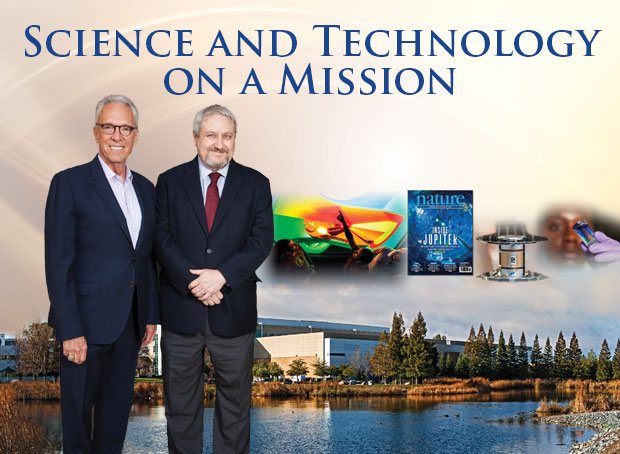At Lawrence Livermore National Laboratory, “Science and Technology on a Mission” delivers solutions for the nation’s most pressing problems. We apply innovative science and technology to help the nation respond to current and emerging security threats.
The many accomplishments featured in this FY 2014 Annual Report demonstrate our mission focus, commitment to scientific and technological excellence, and our tradition of delivering innovations for the nation. Working at the frontier of what is possible and striving for game-changing solutions, we address issues of national and global importance.
Advances in three areas merit special mention. In FY 2014, we achieved major successes in high-performance computing (HPC), the use of the National Ignition Facility (NIF) for high-energy-density science, and the pursuit of advanced manufacturing methods relevant to national security. These accomplishments are particularly important to our core responsibility—nuclear deterrence—and they have far-reaching implications for all of our mission areas.
Our Laboratory’s defining purpose is sustaining confidence in the nation’s strategic deterrent without nuclear testing. As part of this responsibility, we execute the Stockpile Stewardship Program for the Department of Energy’s (DOE’s) National Nuclear Security Administration (NNSA). The stewardship program represents an unprecedented challenge, requiring rigorous application of the scientific method to extend our understanding of weapons phenomena, assess the condition of weapons, and, when necessary, pursue programs to extend the stockpile life of aging systems.
Assessments depend on using computer simulations to model complex physical processes that occur in detonating nuclear weapons. Sequoia, one of the world’s most powerful supercomputers, is advancing the state of the art in this area. However, greater predictability is needed in weapons physics simulations to extend confidence in the stockpile well into the future. DOE recently announced that a next-generation supercomputer—powered by millions of cores—will be delivered to Livermore in 2017. This acquisition is part of a concerted DOE effort to sustain U.S. leadership in HPC and meet NNSA mission needs.
HPC is a defining strength of the Laboratory. Computing and simulation are central to almost everything we do here. FY 2014 accomplishments supported by HPC in nonproliferation, climate change, cybersecurity, drug discovery, and many other areas are also highlighted in our Annual Report.
Of course, the simulation codes used to assess the performance and safety of weapons must be validated. This is the role played by our experimental facilities, and NIF is our flagship capability for exploring the extreme conditions and complex processes that occur in a functioning nuclear weapon. In addition to testing our simulations, NIF develops and sustains the skills of our weapons scientists and serves an expanding user community that is opening up an exciting new field of scientific discovery. Remarkable accomplishments in FY 2014 include demonstrating “self-heating” of a fusion plasma—a key step needed to achieve fusion ignition and burn—and re-creating in the laboratory the conditions that exist inside giant planets.
While the stewardship program has been exceptionally successful in developing and applying new tools to understand our aging stockpile, programs to extend the service life of aging weapons systems have been lengthy, costly endeavors. We can do better. Toward this end, LLNL is pursuing new, paradigm-changing approaches to manufacturing, including three-dimensional printing. Our many FY 2014 successes in this area are attracting broad interest. We have introduced additive manufacturing to production processes used in the nuclear weapons enterprise and created new materials with novel properties that may have wider application. In addition, Livermore has demonstrated the value of applying HPC to advanced manufacturing to help accelerate the cycle from design concept to engineered product. As in most other program areas, much of our manufacturing research involves collaborations. In pursuing our mission, we seek opportunities broadly to expand partnerships with sponsors, other laboratories and research institutions, academia, and U.S. industry.
Our many programmatic accomplishments and continuing attention to safe, secure, sustainable, and effective operations are a credit to LLNL’s outstanding workforce. Remarkable individuals and highly motivated teams are focused on mission delivery and dedicated to national service. As we look to the future, the Laboratory must continue to attract and retain a diverse staff that delivers vision, quality, integrity, and technical excellence.
Lawrence Livermore’s “Science and Technology on a Mission” focuses frontier research on important national objectives. It’s an exciting challenge that we eagerly pursue.





